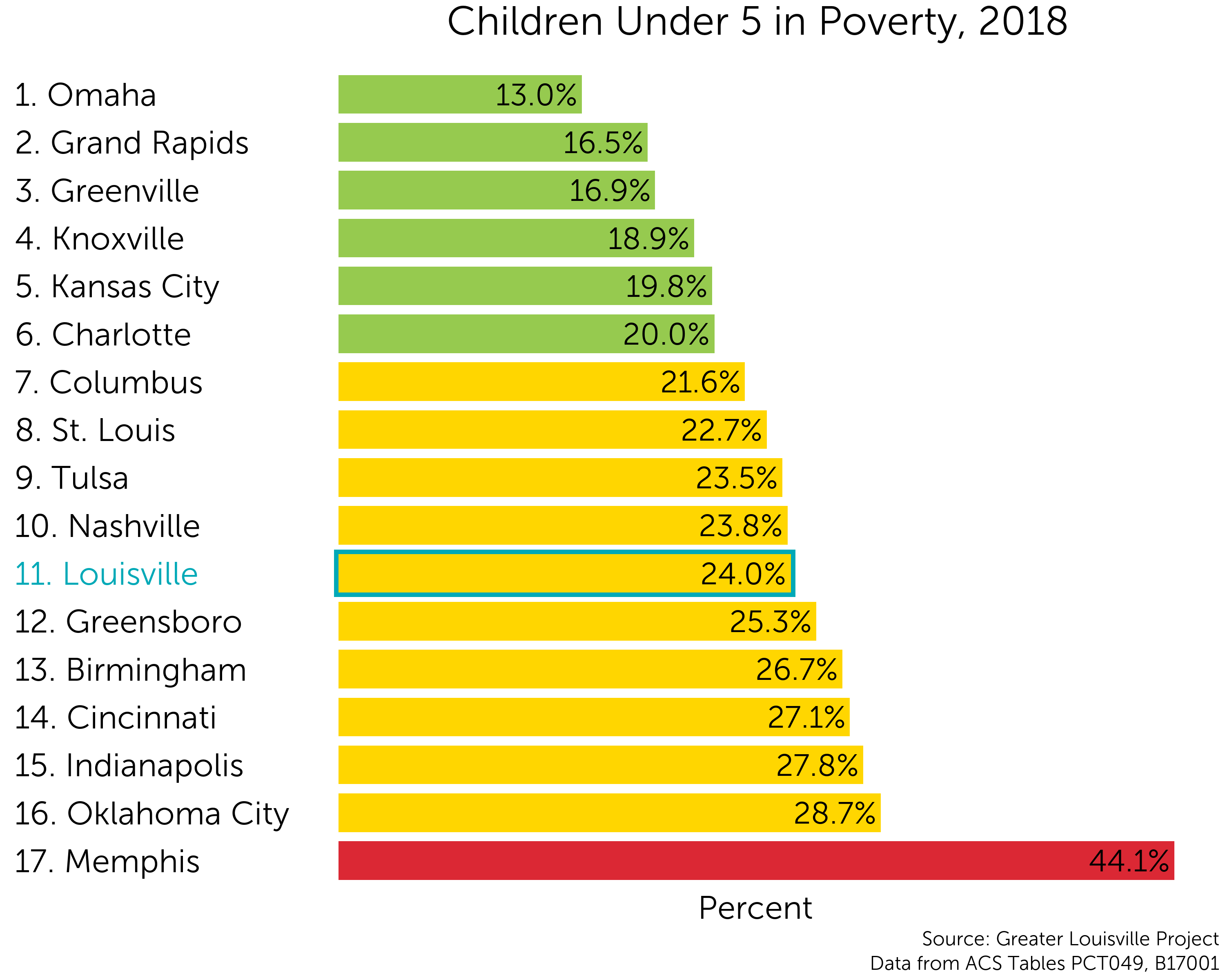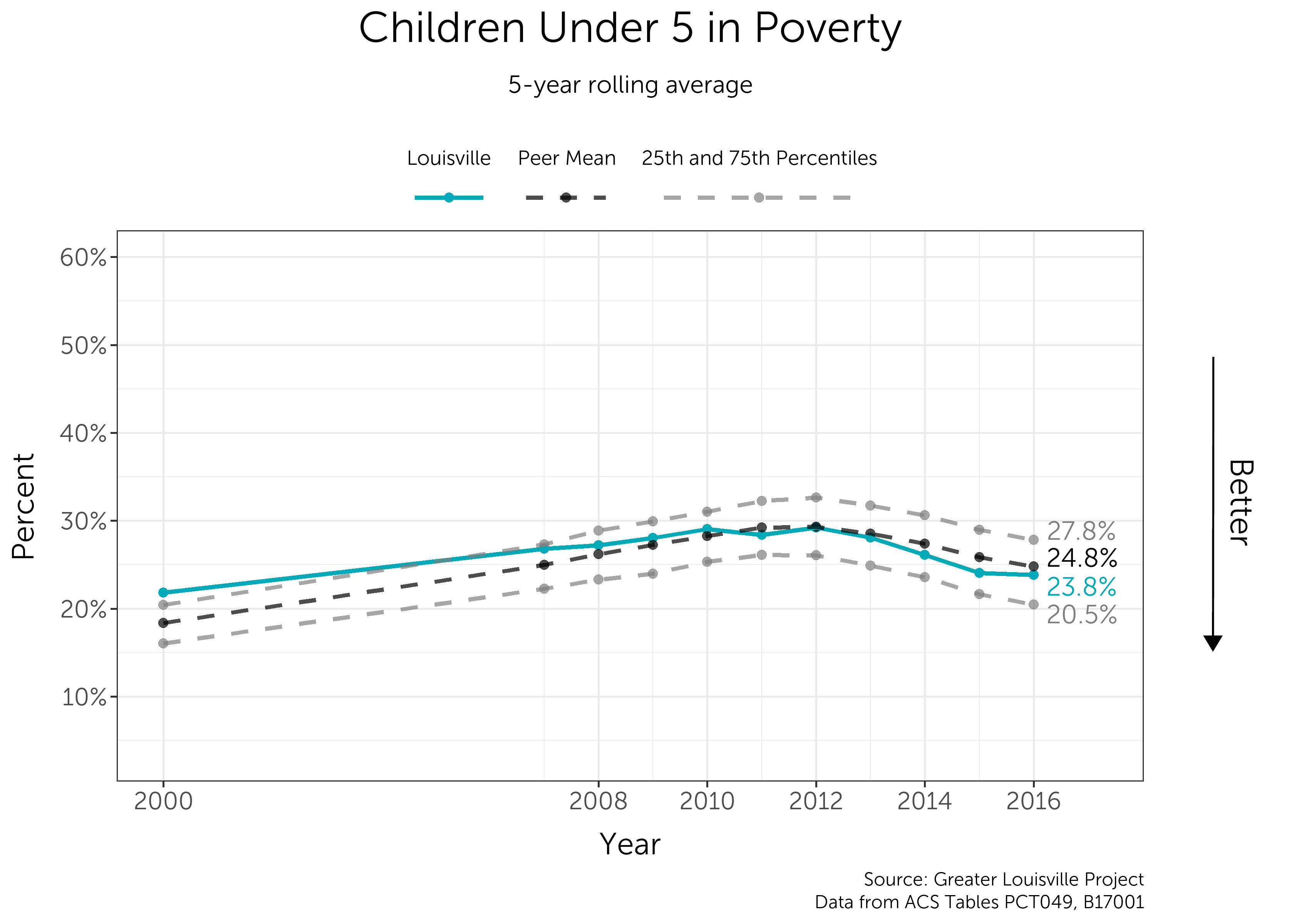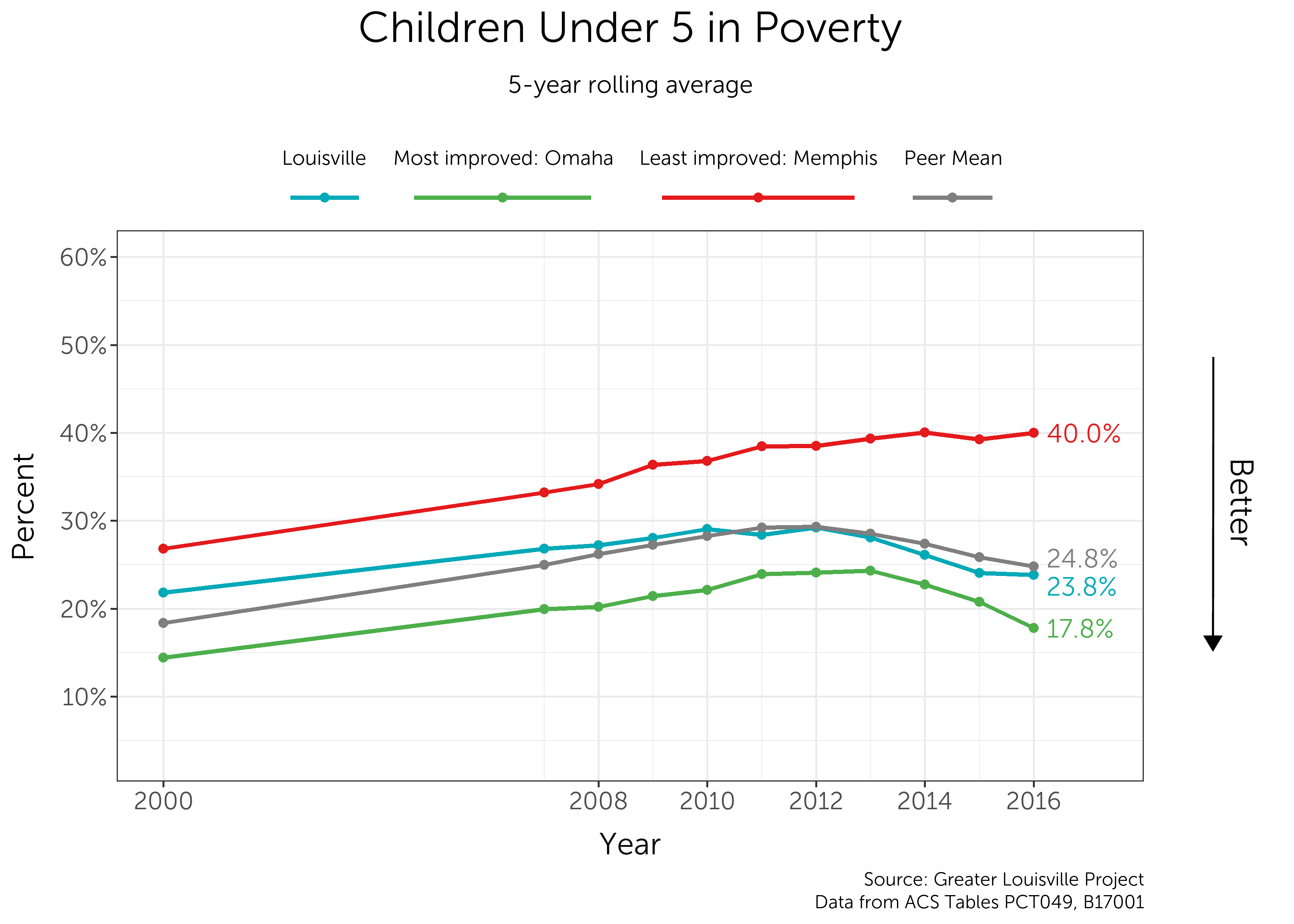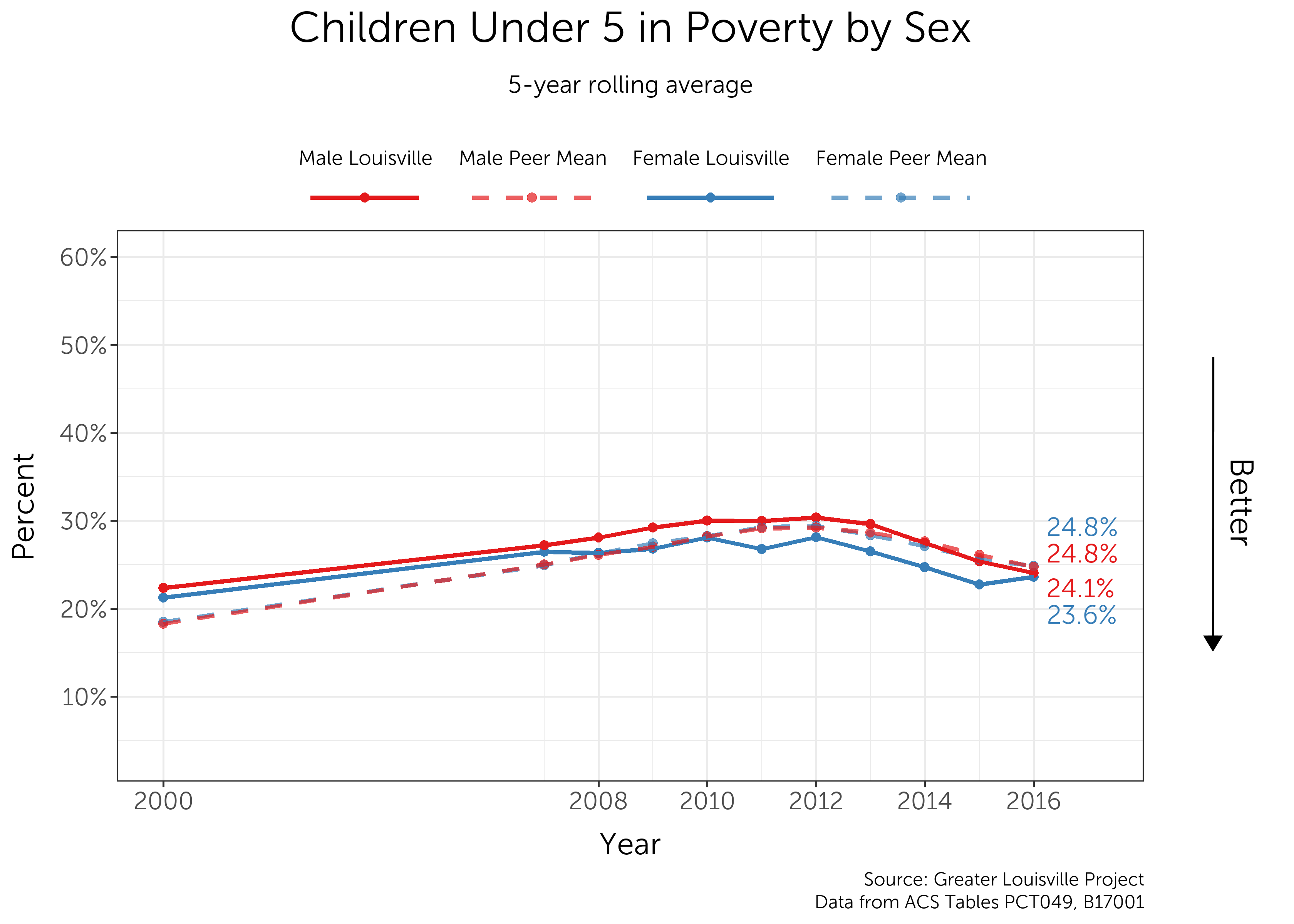Children Under 5 in Poverty
Young children living in poverty or in a neighborhood of concentrated poverty experience unique barriers to food access, stable housing, employment, healthcare, and social support. These barriers can hinder a child’s ability to achieve academic success. In addition, children living below the poverty line may struggle with finding stable and substantial employment as adults.





